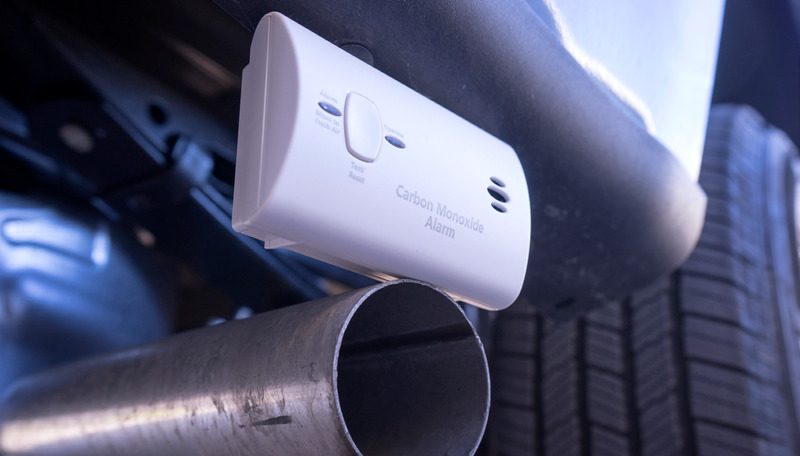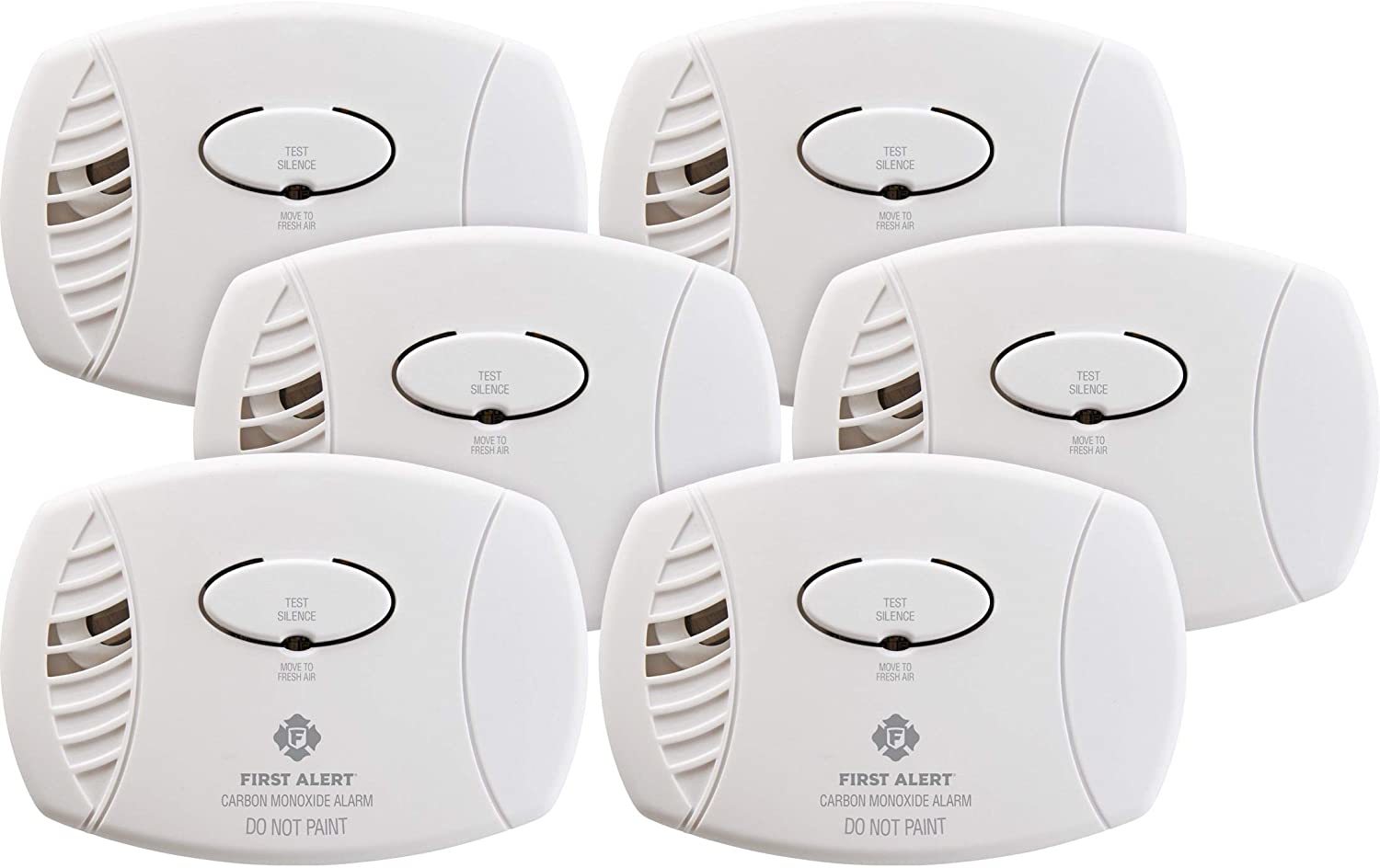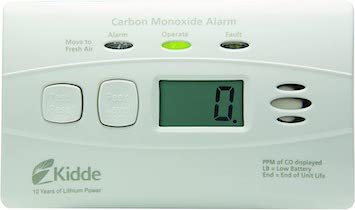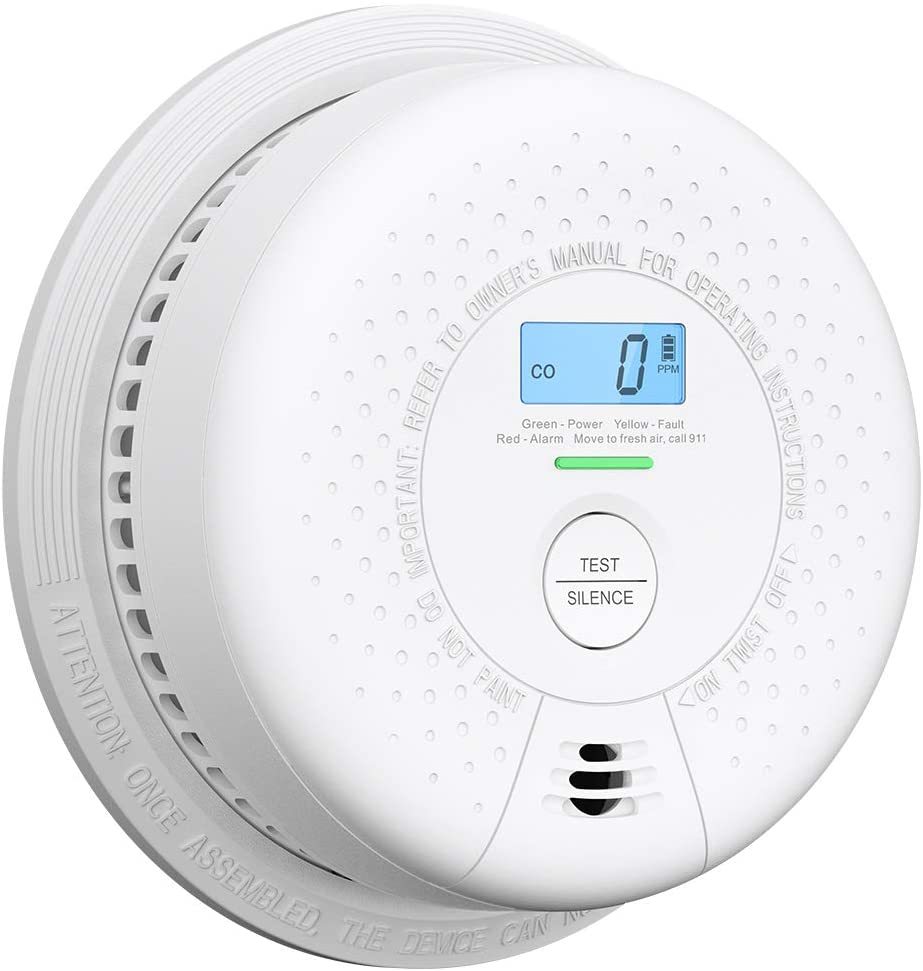In this review, I look at some of the best carbon monoxide detectors available in 2024.
When purchasing a carbon monoxide detector you need to consider the specific risk you are trying to mitigate.
Is it a permanent fixed risk location; like a gas water heater; cars you like to work on in your garage; or a semi-enclosed entertainment area with a patio heater?
Do you go camping in a modern multi-room tent, camper or caravan and cook indoors with a gas stove, perhaps when it is raining?
Then you might want to consider a device that can be used at home but is also portable.
This review will explain the features and, in some cases, potential concerns with specific models. Please note that the ‘cons’ may relate to how you want to use it, not necessarily a flaw in the product itself.
In the summary, ‘Buyer’s Guide’ at the end of this review, I will consolidate critical factors for you to consider.
If you feel you are ready to decide from looking at individual device reviews, I recommend you then read through the summary to ensure you make the right choice, which could even be purchasing more than one model.
What is carbon monoxide?
Carbon monoxide is a potentially deadly, odorless gas. It is known as a by-product of cooking on a gas stove or element, gas water heaters, fireplaces, patio heaters and portable cookers, as well as from the exhaust of petrol-driven cars.
Because the gas can’t be detected by smell, a carbon monoxide detector is an important investment where the risk of inhalation may be present.
Which best carbon monoxide detector is best?
1. Kidde Carbon Monoxide Detector with Digital Display & LED Lights, CO Alarm
The Kidde unit in this review is a tidy looking device which is very easy to use. This is an excellent option for an environment where the risk may come from different locations.
For example, a car workshop, home garage, or perhaps a large working kitchen.
It doesn’t have to be mounted which makes it ideal for portable use, for example in an area like a semi-closed gazebo where you might have a patio heater burning.
Another good use would be camping, where you might be cooking in a tent or even beside a tent.
It takes three AA-size batteries. The batteries come with the sensors, which is good because most people probably don’t have 12 spare batteries lying around the house.
It features a low battery alarm which is an excellent feature because it is easy to forget to check these things in our daily lives.
The Kidde carbon monoxide alarm has a bright digital display which is readable in dim light.
It has a loud alarm, not dissimilar to that of a smoke detector.
The signal has four tones so it can be distinguished from a fire alarm, which is helpful if you have (and you should) both types of alarm devices.
It does take quite some time of continuous gas emissions before the Kidde gas detector alarm will be activated.
Pros
Cons
2. First Alert CO400 Carbon Monoxide Detector, Battery Operated
If you are a big user of gas appliances, the First Alert CO400 Carbon Monoxide Battery Operated Detector come is a range of packs. The six-pack allows you to cover all the locations where you might need it, including places such as the water heater, which you might not consider a real risk and is not near a power socket.
Dirty flames are a common source of carbon monoxide build-up. Another reason to use a 6-pack is if you have a multi-level home.
The gas build-up may not be where the gas appliance itself resides.
The First Alert CO400 carbon monoxide detector comes in two variants. One has a display and a 10-year battery life, and the other is simpler in design and features. Ten years is a very long time for a carbon monoxide detector.
The First Alert, carbon monoxide detectors, have a few alerts. The first is the one you buy it for, that is when carbon monoxide is detected.
It will audibly alert you when the batteries are running low, which with typical use is around one year, and a battery charge level indicator is visible on display.
It will also warn you with an alert when the detector is at the end of its life and no longer reliable.
These detectors come complete with the required 9-volt batteries.
As this model of carbon monoxide (CO) detector is portable, you can take it with you on camping holidays and the boat, and with six units, not all of them are likely to be needed when you are away from your home for a vacation.
Pros
Cons
3. Kidde C3010D Carbon Monoxide Alarm with Digital Display and 10 Year Sealed Battery
For significant users of gas appliances, this Kidde C3010D model allows you to cover all the locations where you might need it.
Being portable, you can take it with you on vacation for use with gas heaters and appliances as well as on the boat.
Another reason to use a 6-pack is if you have a multi-level home. The gas build-up may not be where the gas appliance itself resides.
The tamper-proof 10-year sealed lithium battery is a big plus that will give you some peace of mind.
If you buy this unit, you will not have to monitor battery life in the way you do with ordinary batteries that may have to be replaced as often as once a year with other devices.
This carbon monoxide detector can be easily mounted but will also sit flat if you don’t want to drill holes or you want the flexibility of portability.
This Kidde carbon monoxide detector features a green LED, which flashes every 30 seconds to indicate that it is powered up and functioning correctly.
As well as the audible alarm, a red LED flashes when a dangerous level of CO is detected. The visual signal is nice as a confirmation, but could also be useful for people who are hard of hearing.
Pros
Cons
4. MTI Industries 35-742-WT Safe T Alert 35 Series Dual Liquid Petroleum Gas and Carbon Monoxide Alarm
The MTI Industries liquid petroleum gas and carbon monoxide (LP/CO) sensor is suitable for use in a campervan, pop-up campervan, travel trailer or fifth wheel to detect both liquid petroleum gas and carbon monoxide.
The other sensors reviewed here only detect carbon monoxide, but in the environments either gas could be present.
The MTI Industries sensor has separate lights for each of the LP gas or CO gas, which means that should the alarm activate, the user should know exactly where to look for the problem, rather than being faced with uncertainty in a pressure situation.
It is essential to consider where you install this unit because LP gas is heavier than air and will accumulate near the floor whereas CO can go anywhere a breeze blows it.
For that purpose, it has been designed to take up very little space and only protrudes 2 inches from the wall.
It has two mounting holes for easy installation. It doesn’t contain any batteries and has to connect to a 12-volt power supply.
While it is not aesthetically pleasing, it will be straightforward for anyone who sees it, to understand what is happening and what they need to do, with the detailed information provided on the face plate.
This feature is essential because, in this environment, you as the owner may well not be present when the alarm activates.
Pros
Cons
5. X-Sense Carbon Monoxide Detector Alarm with LCD Display, Compliant with UL 2034 Standard
The X-Sense Carbon Monoxide detector alarm should give you peace of mind for ten years, which is a big plus for an item you need but may not think about replacing very often.
It comes with a sealed 10-year life lithium battery, so you don’t need to remember replacing the cells during this time either. You will want to test it from time to time, which is as easy as pushing the button on the top.
Most CO detectors that have a life this long would need mains power. This sensor doesn’t, so you do not need the added cost of an electrician to install it for you.
The X-Sense comes with a 3-color flashing LED indicator, with green meaning everything is working and safe, red (which will be accompanied by the audible alarm) when it detects carbon monoxide gas and yellow when there is a problem.
Details are on the faceplate of the sensor, along with instructions to call 911 if it does go off.
In addition to the numeric gas indicator, the digital display also displays the battery life, which is essential for a long life device, to give you the security that it is working.
This unit has ETL approval and conforms to UL2034. In addition to a 60-day money-back guarantee, there is also a five-year warranty, where many alarms tend to only cover the first year after purchase.
For easy mounting, the X-Sense comes with a mounting bracket, screws and anchor plugs and installs similarly to a smoke detector.
Pros
Cons
Buyer’s Guide
Several things should be taken into consideration when buying a carbon monoxide detector.
1. How many CO detectors do I need?
Gas tends to be blown or accumulate in spaces. It can travel through the drywall. You should consider the various places that gas might appear.
Understand also that gas doesn’t just come from leaks, it is also a common consequence of a dirty flame, which could be anything from a pilot light to your fireplace.
Many locations around a house are potentially at risk, and gas accumulation tends to concentrate in a specific area. Therefore you should consider having more than one unit in your property.
2. Should I buy a CO detector that is mains power or battery power?
Mains power units are useful, but you should also consider whether you want certainty that your carbon monoxide detector will also work in the absence of AC power.
Power cuts happen, which could increase the likelihood that you will be using a gas appliance of some sort.
Having a unit with backup batteries is therefore essential. In this case, you’ll need to know that the batteries have sufficient charge, so you should look for a device that warns you when the cells are going flat.
Of course, a mains-powered CO sensor needs to be installed by an electrician.
If you want a long life and do not want to spend extra money on getting it installed, this is something to consider.
Connecting to AC power may also limit the locations where you can install the unit.
With battery-powered devices, look for a battery level indicator on display.
All batteries do not perform the same, so you want to be confident that the CO detector you are using will work until the next time you check it.
3. What is the life expectancy of a CO detector?
Carbon monoxide detectors have a finite life, and it is easy to set and forget. A good one will tell you when it is nearing the end of its usable life, which is commonly between 5 and 7 years.
All carbon monoxide detectors work because of a chemical reaction, and the components will only be active for so long.
If the device you choose can’t tell you that it is no longer working, the only way you would find out is when excess carbon monoxide is present and if the detector ceases functioning, and then it will be too late.
One thing that has occurred to users of all brands and models from time to time is that sometimes old stock is accidentally shipped out and with a finite design life, these will not give you the longevity you expect.
I recommend that whatever you buy and whenever you intend to use it, as soon as it arrives, just check the date of manufacture. All manufacturers will, of course, replace the units if old ones have accidentally been shipped.
4. Multipurpose Sensors for LP and CO Gases
If you are looking for a CO sensor for your caravan, pop-up, camper van, mobile home, or fifth-wheel, you might also be using LP gas.
In this case, it is a good idea to consider a dual-purpose sensor alarm rather than having to fit multiple devices.
But do consider the nature of the gases, understanding that LP gas is heavier than air and will sink to the floor, which CO is less likely to do, subject to wind or draft.
5. Standards and How to Test
Your state is likely to have documented standards for the CO sensor such as UL2034.
However, some states only require that it has been tested and works, which you can do in several ways.
One is to be a small CO canister, hold it close to open fire, or you could have it close to your car exhaust with the engine running, but you need a safe way to do that, which does not entail holding it in your hand.
6. Carbon Monoxide is Hard to Detect – a Silent Killer
Carbon monoxide is a lethal gas with no odor or taste. It is a silent killer that many people do not consider.
Take my personal experience. My home office is next to my garage and has a ranch slider type door separating it.
A few months ago, I was home alone, running my car to keep the battery charged as I wasn’t driving it at the time.
I started seeing dots in front of my eyes and put it down to pollen. Then I got a little dizzy and wondered why.
Suddenly I realized. While the garage door was open, so was the ranch slider and the wind blew carbon monoxide straight into the area where I was busy on my computer.
It was only then that I realized that I was being gassed and I could have quickly become very ill or worse.
Conclusion
Thanks for checking out my reviews of these carbon monoxide detectors. There are so many online to choose from, and it can be a confusing and tiresome task sorting through them all.
I appreciate you stopping by. Feel free to send your own reviews and comments below.
More detector/alarm-related reviews and buyer’s guides:






